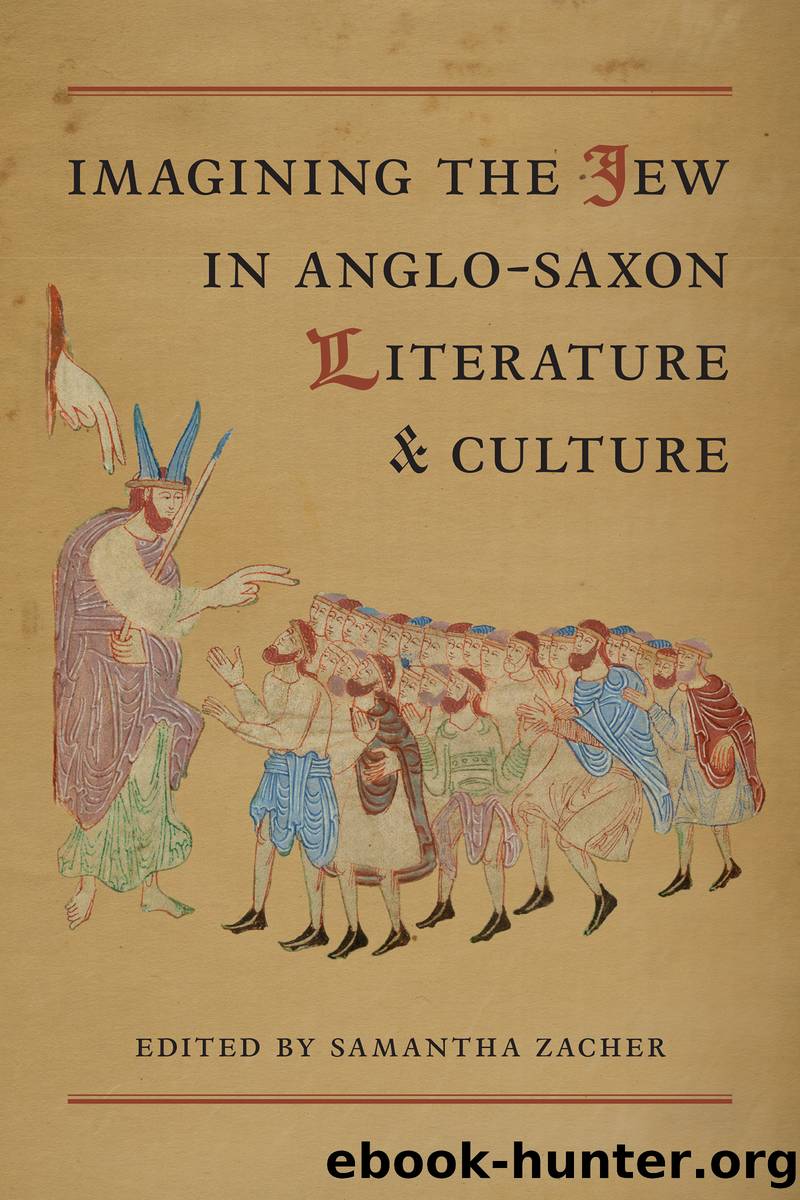Imagining the Jew in Anglo-Saxon Literature and Culture by Zacher Samantha;

Author:Zacher, Samantha;
Language: eng
Format: epub
ISBN: 978-1-4426-6629-0
Publisher: University of Toronto Press
Published: 2016-06-29T00:00:00+00:00
(Oh God, who in the glorious discovery of the health-giving Cross, reawakened the miracula (miracles/amazing events) of your passion, grant that by the worth of the life-giving tree, we may reach the safety of eternal life.)
This is a rich text and a full analysis of its phrasing would involve an extended explication. Instead, I concentrate on those aspects of the prayer, which seem relevant to Elene and the Inventio crucis tradition. To begin with, the event of the Inventio crucis is praeclara â glorious. The definition of the inventio as praeclara corresponds to the account of the finding of the Cross in the legend tradition and in the poem. Judas recovers the Cross while Elene, her court, and presumably the inhabitants of Jerusalem look on. The miraculous signs occur before a crowd of faithful Christians and of amazed Jews. There are divine signs to indicate where Judas should dig for the Cross and there is no question as to whether he will find it. The next clauses of the prayer are more problematic. By the invention of the Cross, God ârousedâ or âawakenedâ the amazing events, the miracula, of the passion. While the A text of the Inventio crucis legend includes a resurrection miracle, such miracles are common in hagiographic tradition and the prayer seems to make a much larger claim. The meaning of suscito is important. The core meaning is âto cause to move from a recumbent positionâ and the extended meanings âto rouseâ or âto wakenâ derive from this meaning. This phrasing might be taken to allude to the resurrection miracle which serves to distinguish the true Cross from the crosses on which the thieves died, but it also corresponds to the history of Christianity implicit in the poem and in the Inventio crucis tradition generally. In these texts, the Roman emperor Constantine is not the heir and indeed the protégé of the persecutors, and someone who had known about Christianity since his youth, as in fact the historical Constantine had, but a man who is profoundly ignorant of the claims and the nature of Christian faith. His ignorance and the ignorance of his counsellors are exculpatory. The miracula of the passion (and the word is in the plural) were reawakened on this (liturgical) day.
The Old English Elene and the Inventio crucis legend generally serve to celebrate the spiritual authority of secular rulers, specifically Constantine and Elene,8 and to obscure the historical fact that the greatest impediment to the dissemination of Christianity was for generations the hostile secular authority of the imperatores of the Roman empire. This complicates the clarity of the hagiographic narrative. The events of the age of persecution are simply elided in the Inventio crucis tradition. The good news of the passion and resurrection of Jesus Christ was not rejected by the secular authorities and yet affirmed and vindicated by the heroism of the martyrs; it was hidden and then found â âinventedâ in the etymological sense in the age of Constantine. From this perspective,
Download
This site does not store any files on its server. We only index and link to content provided by other sites. Please contact the content providers to delete copyright contents if any and email us, we'll remove relevant links or contents immediately.
| Anthropology | Archaeology |
| Philosophy | Politics & Government |
| Social Sciences | Sociology |
| Women's Studies |
Born to Run: by Christopher McDougall(6898)
The Leavers by Lisa Ko(6808)
iGen by Jean M. Twenge(5167)
Sapiens by Yuval Noah Harari(5126)
The Kite Runner by Khaled Hosseini(4960)
Spare by Prince Harry The Duke of Sussex(4800)
Bullshit Jobs by David Graeber(3847)
Machine Learning at Scale with H2O by Gregory Keys | David Whiting(3654)
Never by Ken Follett(3545)
Livewired by David Eagleman(3535)
Goodbye Paradise(3459)
Fairy Tale by Stephen King(2963)
A Dictionary of Sociology by Unknown(2862)
Harry Potter 4 - Harry Potter and The Goblet of Fire by J.K.Rowling(2815)
The Social Psychology of Inequality by Unknown(2771)
The Club by A.L. Brooks(2755)
People of the Earth: An Introduction to World Prehistory by Dr. Brian Fagan & Nadia Durrani(2620)
0041152001443424520 .pdf by Unknown(2608)
Will by Will Smith(2589)
